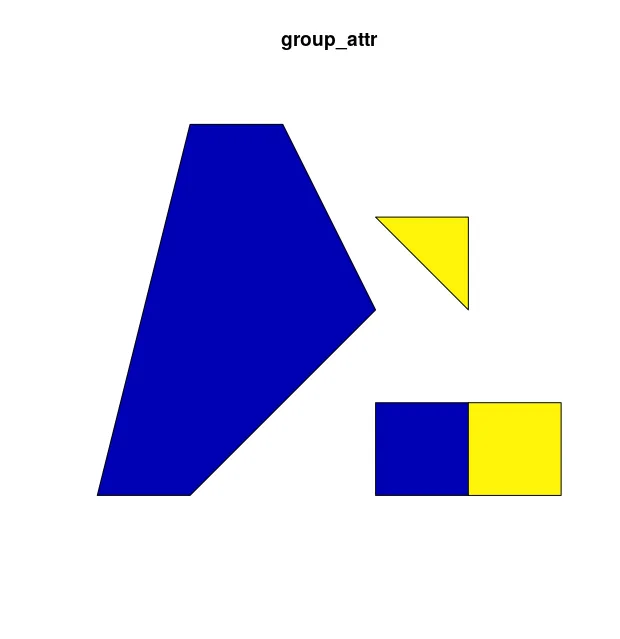我有一个 POLYGON 几何类型的 sf 对象。我想使用分组属性(group_attr)将这些多边形聚合成 MULTIPOLYGONs,并将一个新的 MULTIPOLYGON 对象与属性表连接起来。因此,结果将是一个具有两行三列(group_attr、second_attr、geometry)的 sf 对象。我已经尝试过使用 st_cast,在 sfc 对象上效果很好,但在 sf 对象上不行。是否可以使用 sf 包来实现这一点?
p1 <- rbind(c(0,0), c(1,0), c(3,2), c(2,4), c(1,4), c(0,0))
pol1 <-st_polygon(list(p1))
p2 <- rbind(c(3,0), c(4,0), c(4,1), c(3,1), c(3,0))
pol2 <-st_polygon(list(p2))
p3 <- rbind(c(4,0), c(4,1), c(5,1), c(5,0),c(4,0))
pol3 <-st_polygon(list(p3))
p4 <- rbind(c(3,3), c(4,2), c(4,3), c(3,3))
pol4 <-st_polygon(list(p4))
d <- data.frame(group_attr = c(1, 1, 2, 2),
second_attr = c('forest', 'forest', 'lake', 'lake'))
d$geometry <- st_sfc(pol1, pol2, pol3, pol4)
df<- st_as_sf(d)
plot(df)
df
Simple feature collection with 4 features and 2 fields
geometry type: POLYGON
dimension: XY
bbox: xmin: 0 ymin: 0 xmax: 5 ymax: 4
epsg (SRID): NA
proj4string: NA
group_attr second_attr geometry
1 1 forest POLYGON((0 0, 1 0, 3 2, 2 4...
2 1 forest POLYGON((3 0, 4 0, 4 1, 3 1...
3 2 lake POLYGON((4 0, 4 1, 5 1, 5 0...
4 2 lake POLYGON((3 3, 4 2, 4 3, 3 3))

dplyr::first是一个快捷方式,用于定位向量中的第一个项目,相当于[[1]]。这将作为.funs参数传递给summarise_all,也许他们使用它来控制列名。进一步调查会很有趣。 - Francis Barton